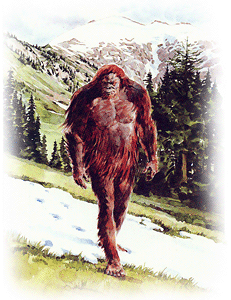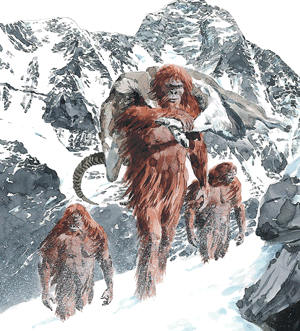TB Bacterium Hitched a Ride with Ancient Humans
Thursday, September 12th, 2013September 12, 2013
Tuberculosis (TB), a major cause of death in developing countries, may be so hard to defeat because it likely originated among our ancestors in Africa more than 70,000 years ago. In fact, it may have originated even before modern people migrated from the continent, according to a new study by an international team of scientists led by Sebastien Gagneus, an expert on infectious diseases from the Tropical and Public Health Institute in Basel, Switzerland. For their study, the scientists examined DNA sequences of tuberculosis bacteria from 259 subjects throughout the world. These genetic analyses enabled the scientists to construct a “family tree” of the bacterium, tracing its history through time.
A little more than a century ago, TB ranked among the most common causes of death in the world. Rod-shaped bacteria called tubercle bacilli cause the disease. Tubercle bacilli belong to a genus (group) of bacteria called Mycobacterium. Today, improved methods of prevention, detection, diagnosis, and treatment have greatly reduced the number of people who get the disease and those who die from it. However, even today tuberculosis claims many lives in countries where these improved methods are not widely available.
Evolutionary scientists believe that anatomically modern humans first appeared in Africa during the past 100,000 years. Sometime before about 50,000 years ago, they migrated out of Africa to other parts of the world. The new research suggests that early modern humans suffered from tuberculosis and carried the bacterium with them on their journeys. The scientists believe that the TB bacterium’s ability to go dormant (inactive) for long periods enabled the deadly disease to spread with human populations across the globe.

A volunteer physician with Doctors Without Borders, an international relief organization, treats a patient in Kenya for tuberculosis. (AP/Wide World)
Scholars had long thought that human tuberculosis, which cannot survive or infect any other animal, was a relatively recent disease. They believed that human TB originated from tuberculosis varieties that affect animals, such as cattle. Over the past 10,000 years, as humans developed agriculture and began domesticating animals, scientists believed the tuberculosis bacterium was passed to humans from livestock. Bovine tuberculosis, which affects cattle and can sometimes infect humans, seemed to support this view. The new research, however, indicates that tuberculosis was established in human populations long before people began keeping livestock.
Additional World Book articles:
- BCG
- Calmette, Albert
- Trudeau, Edward Livingston
- Tuberculosis: An Old Foe Gains Ground (a special report)




